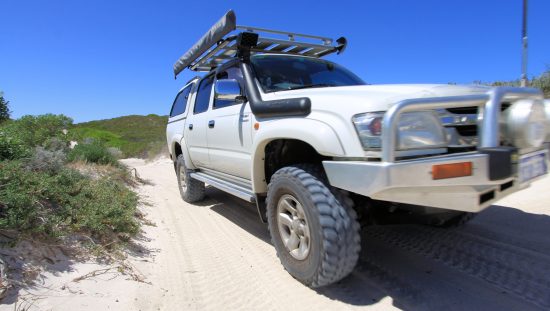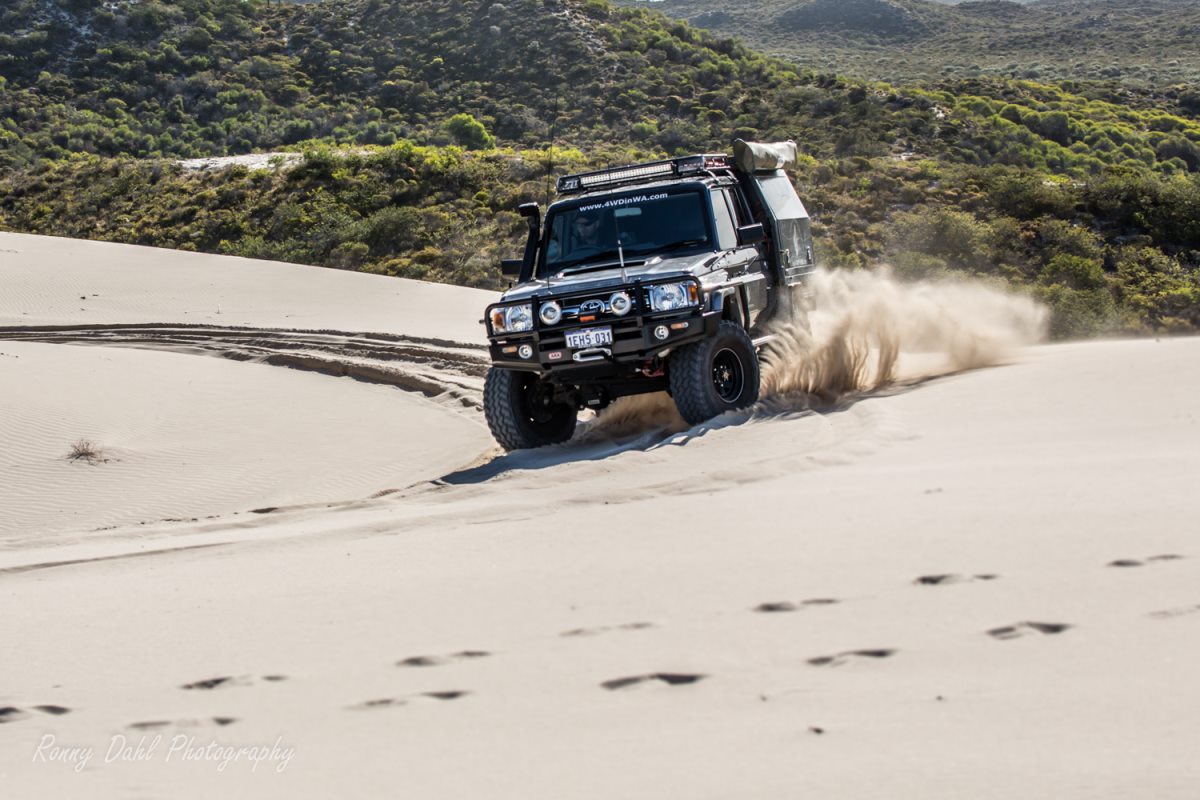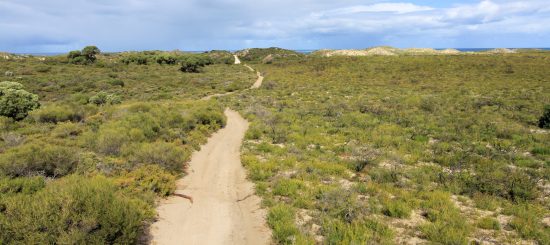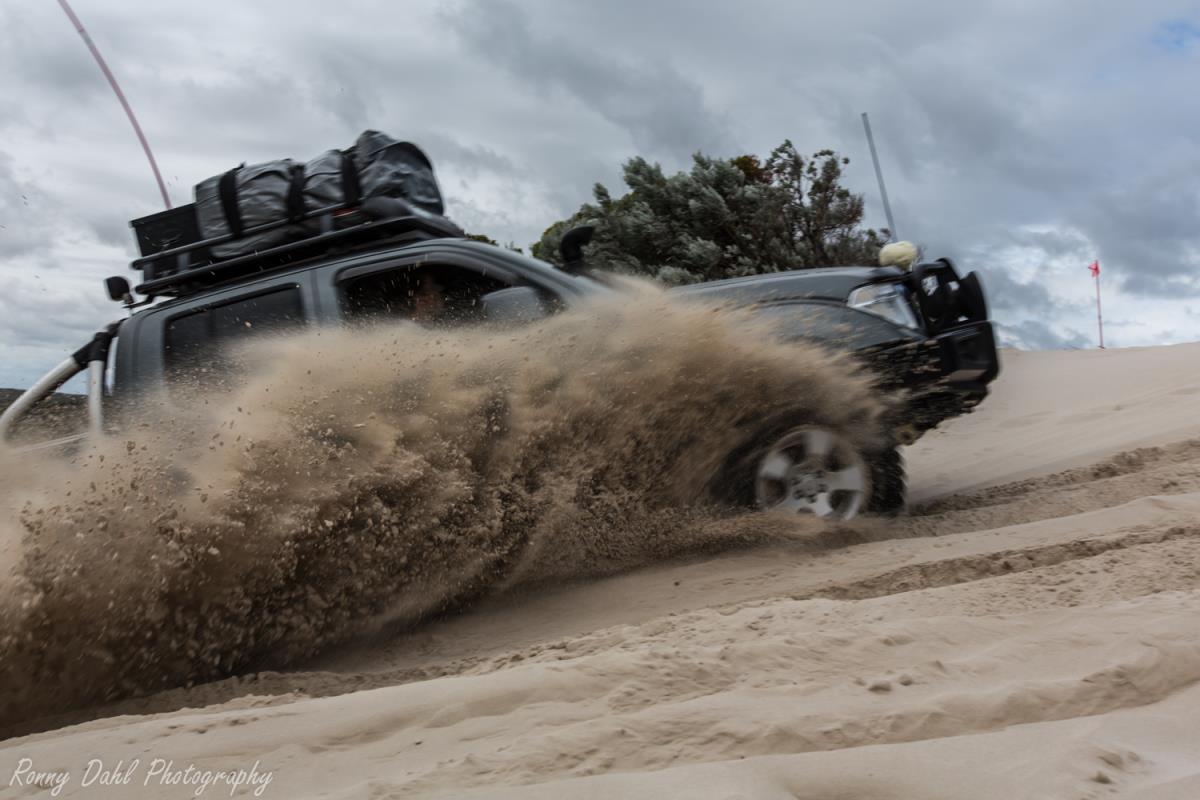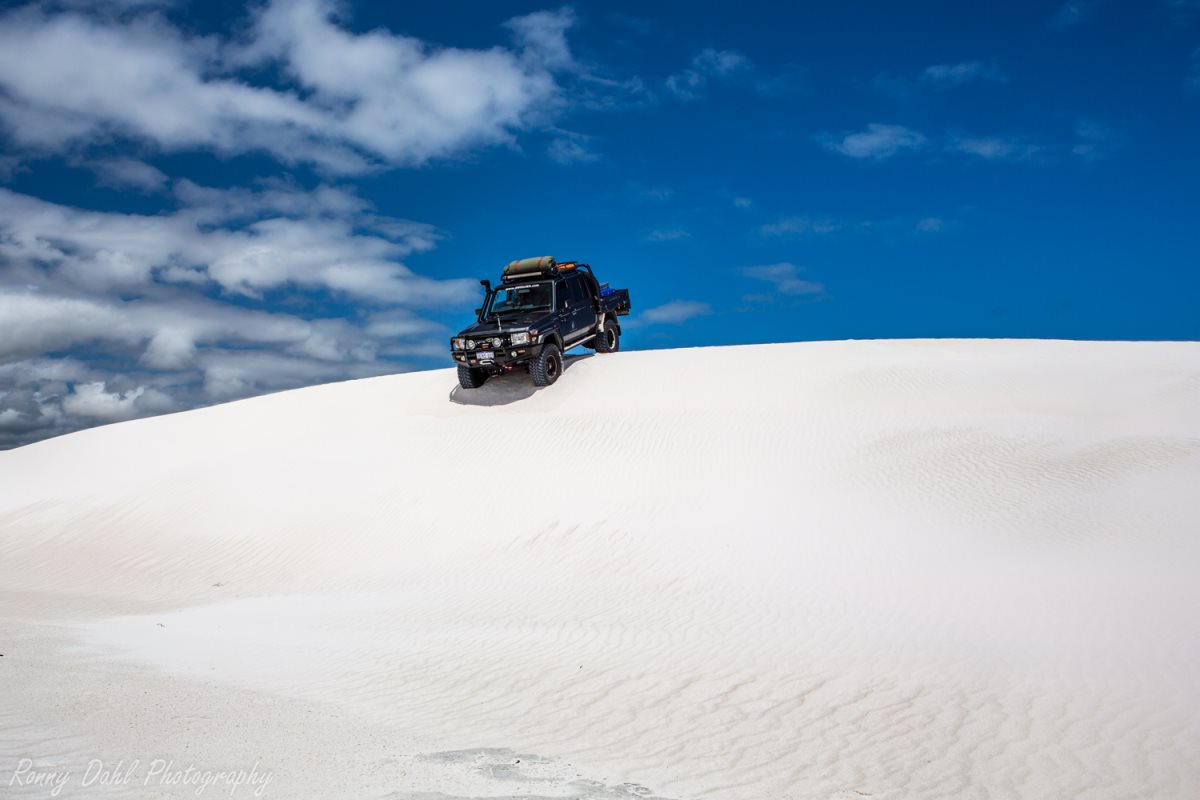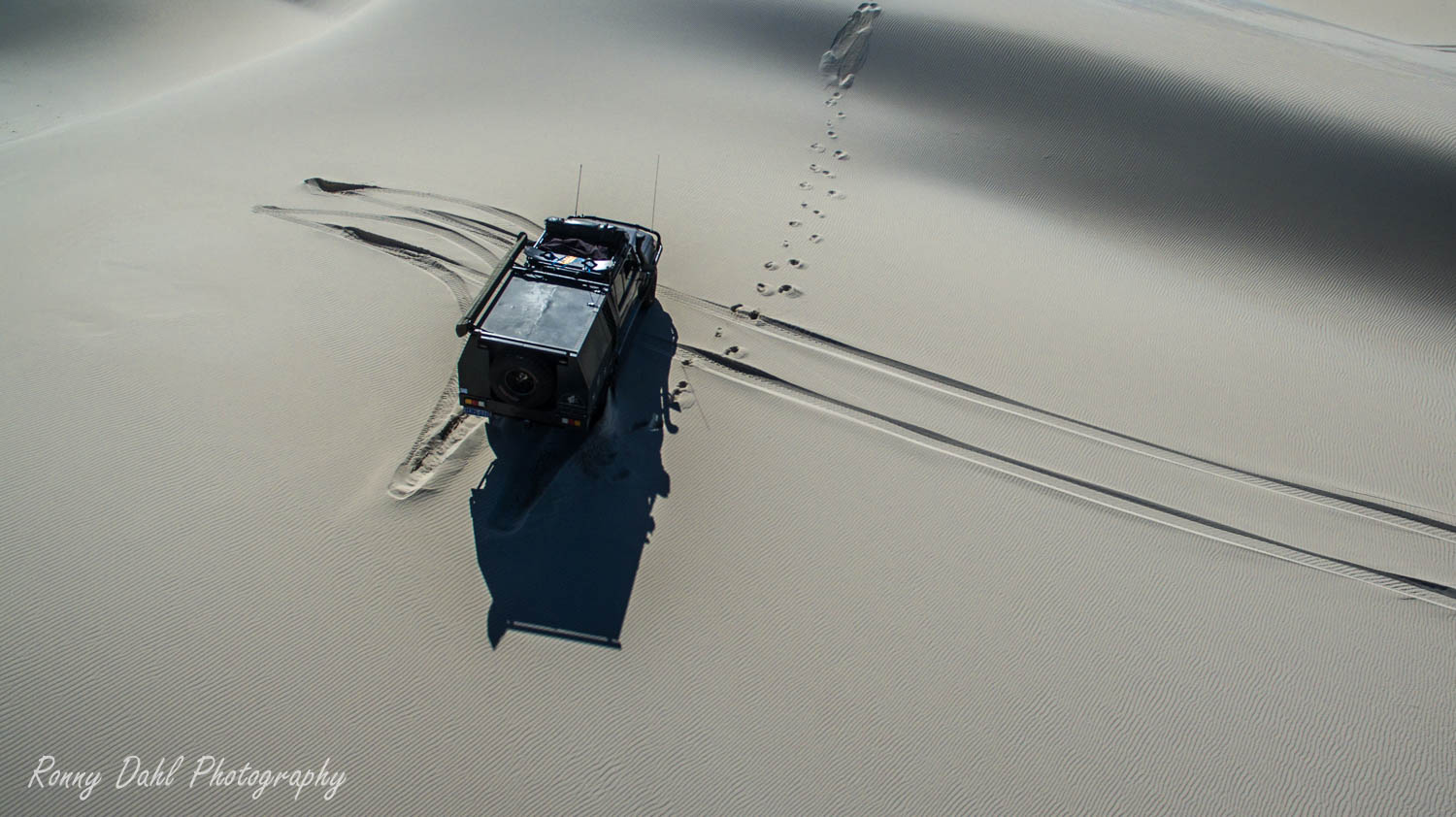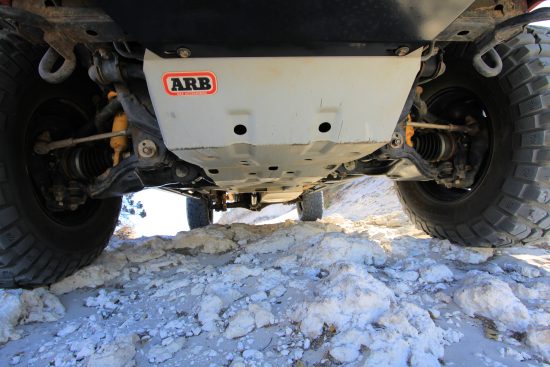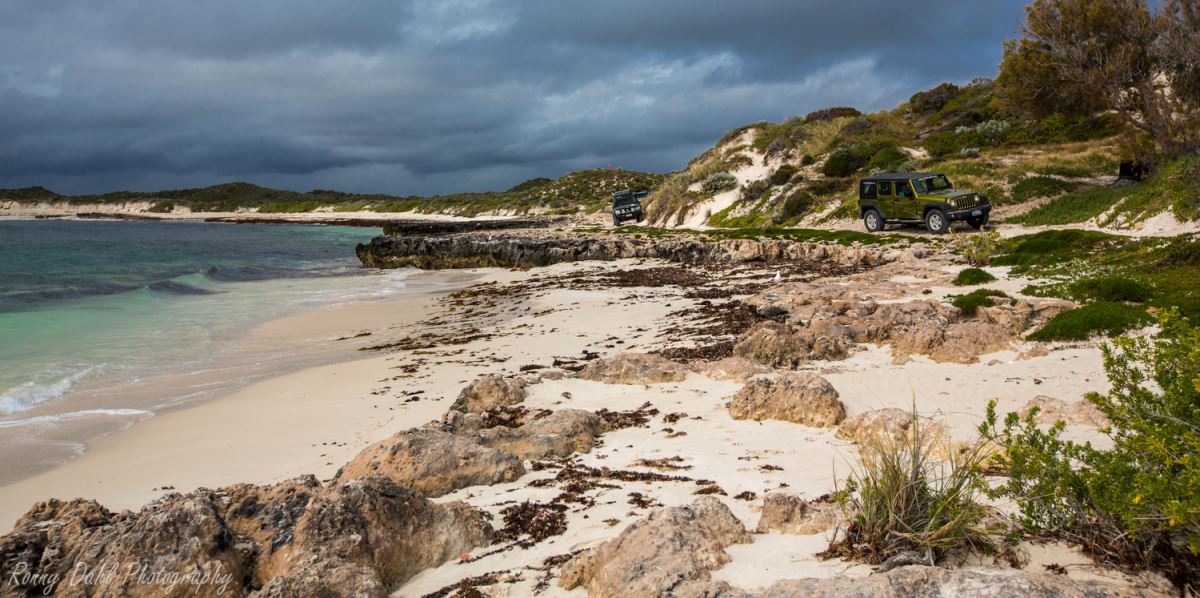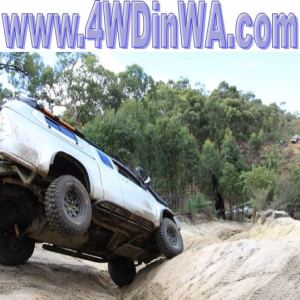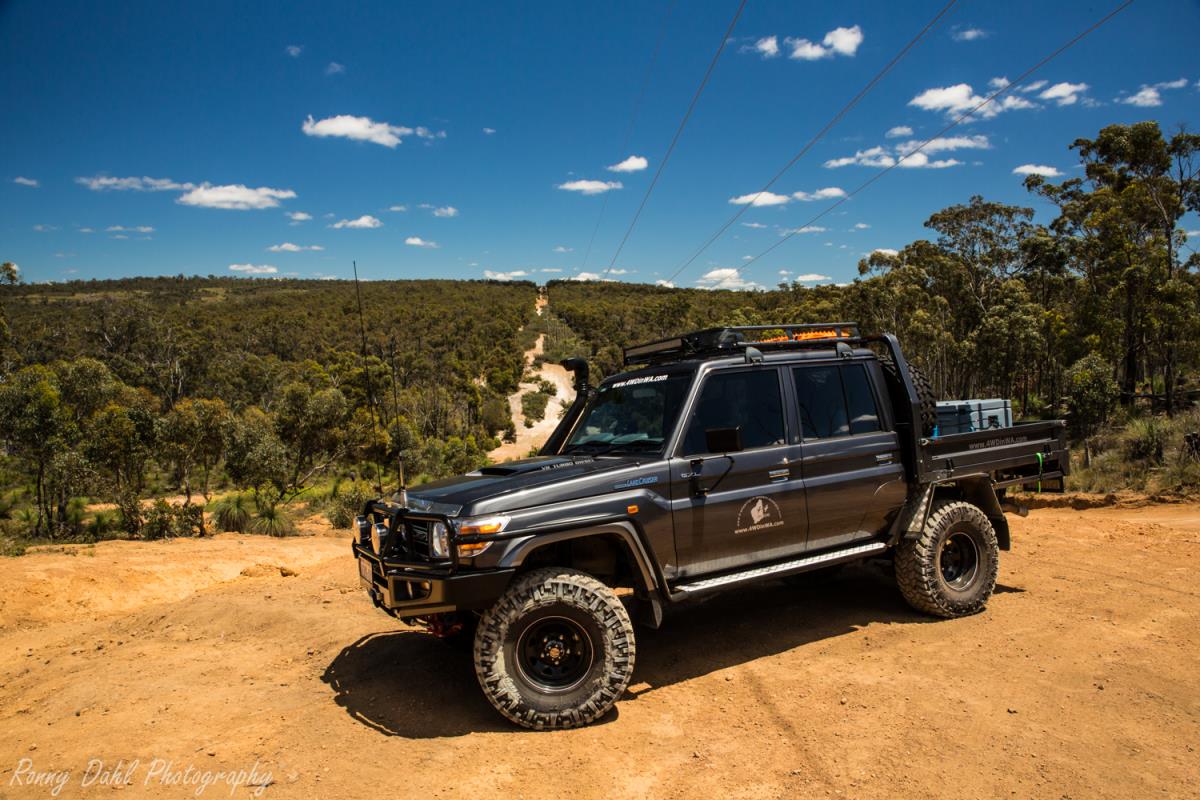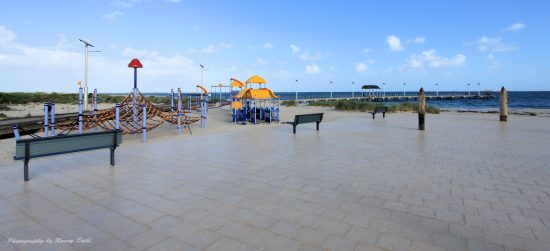
Driving on Sand.
Driving on sand is easy and extremely fun once mastered, to start with it can be frustrating as your experienced mates will be cruising through
without any problems while you will be struggling to make it up that hill (even a small hill) or just moving forward.
It all really comes down to knowing which gears to use, high range low range, the right momentum and tyre pressures, get just one of these things wrong and you will struggle.
When on sand try not to accelerate too fast when taking off in the sand as this will make your wheels spin and you will dig yourself into the sand. Also make sure to keep the front wheels parallel to the track on takeoff when driving on sand, if they are turned to the side the vehicle will need to push more sand and worse, bogging/sinking into the sand or even popping the tire of the rim with low PSI could happen.
When pulling up or stopping, the best way is to put your 4x4 in neutral and
coast to a stop without using your breaks at all when driving on sand. This will prevent a build up
of sand in front of you tires, and will make taking off a lot easier when driving on sand.
If you feel you wheels spinning and no forward movement stop accelerating as
you will just dig a hole for yourself.
79 Series cruising through sand.
General Sand tracks.
Sand tracks are the easiest of sand driving as the tracks are more than likely compacted by everyone that's passed though over time.
It is easy to navigate as the tracks are entrenched and turning corners is like driving on rails because the embankments force your wheels to turn pending on the depth. This can make it a bit dangerous on blind corners if there is an oncoming vehicle, as most sand tracks only have room for one 4wd at a time.
Sand Track.
Soft sand tracks.
When driving on sand there are soft the 4x4 will naturally sink a little bit further into the tracks and create sand track trenches. Low range gears are best for this situation. Low range gears will put less stress on your engine, clutch and driveline.
Use high range and you risk burning your clutch, flywheel and getting bogged.
If there are already tracks before you get there it is best to use them as the
sand will be more compacted than the surrounding sand.
Generally the softer the sand the deeper the track trenches will be and while
in the tracks you will find that your 4x4 is almost guided by the track itself.
This makes it easier to stay on course but can also be a problem as it can be
hard to get out/off sometimes, on narrow sand tracks in the bush you don't want
another vehicle coming around a blind corner at speed with both of you getting
trapped in the tracks.
Turning slowly is the worst thing to do if you want to try and get out, you
could even risk getting bogged.
The best way is to turn rapidly with a bit of momentum (not too much), if this
doesn’t work the first time try again turning faster, this should get you out.
This is good for turning down side tracks as well. I have found this trick to work really well.
Driving on sand dunes (Climbing).
Nissan Navara Flicking sand on a dune climb.
Dunes are awesome fun and come in many different heights and shapes.
Always only have one 4wd climb the same dune at the same time.
Before climbing a dune for the first time it pays to check what's on the other
side, as it could be nice and flat at the top, nice steady sloop down or a
death defining razor back dune.
Razorback dunes are sharp, steep drop offs that will more than likely cause an end to end roll over (front over back).
When climbing a sand dune approach it with the required momentum and choose
your final gear (normally 3rd or 4th low) before starting the ascent, never
change gears while climbing as it will cause all momentum to be lost.
Finding the right gear and amount of pace takes practice as it’s a real fine
line when approaching the top. Too much speed and you could go flying over the
other side causing possible damage, not enough speed and you get stuck at the
top (sometimes even bogged).
Not if! but when you have to reverse down a steep dune make sure to use low
range reverse, keep the front wheels straight and try not to use the brake too
hard or at all. The last thing you want is to be on a bad angle half way up a
hill especially on a sand dune, these kinds of recoveries can be real
nightmares and can take a very long time.
79 series Land Cruiser on a small dune.
Sand dune descents.
Going
down steep hills or sand dunes usually require 1st gear low, let the engine do
the braking and keep your wheels straight. Only ever descent one vehicle at a
time for obvious reasons.
Pick your gear and keep your foot off the clutch, if driving an older vehicle
keep your hand on the gear stick especially if your 4x4 is known to drop out of
gear.
Beach driving.
On the beach you have more choices of where to drive, along the shore line, previous tracks or make your own tracks.
Along the shore line can be more compact but requires constant momentum and an
understanding of waves.
Using previous tracks is good as you know that someone has actually been able
to drive through without too much hassle, also you will be safer from washouts
chased by waves.
Making your own tracks is quite liberating when no one else has laid any before
you for a while at least. Keep an eye out for drop offs and trenches caused by
the waters when driving on sand.
When stopping on the beach for surfing, fishing or whatever try not to park on
or across any tracks that might be there as you could be blocking others from
passing though.
Lime stone coastal areas.
Track with Limestone.
When tackling these areas keep in mind that most of this terrain will be sand tracks which will need to be combined with this segment.
Lime stone can be very sharp and will cut tires that haven't been deflated
enough.
Lime stone is found everywhere along the West Australian coast, mostly on
tracks between Alkimos and Shark Bay.
When driving in these coastal areas most of the driving will be in the sand, that being the case you would already be using Low PSI. The same goes for Lime Stone, with low PSI the tires will mold around sharp rocks protecting the tires and at the same time provide maximum traction. Tires with too much air pressure will cause wheel spin/reduced traction, rock flicking, tire damage, track damage and possible drive line damage.
For hill climbs, if it's mostly Lime Stone, 1st or 2nd gear low would be the
safest option, but depending on how much the sand to rock ratio is and what
vehicle is involved, it’s impossible to give an accurate gear and speed which
will work every time.
Basically the more lime stone there is the less momentum will be required, more sand means more momentum will be needed.
Hill descents should almost always be done in 1st gear low especially if it's a
steep one. One would only use 2nd gear or higher if the hill was a long gradual
fall/angle with a relative smooth surface.
The more rocks there are the slower
you will need to travel, if most of it is sand then moving slowly would still
be the best option with steep descents.
Driving along the limestone coast.
Tire pressures.
Driving on any terrain tire PSI is the most important part when it comes to actually getting anywhere.
If the pressure is too high the vehicle will struggle to move, feel more bumps, wear the clutch and other components. There is really no such thing as too low PSI unless it's a flat tyre or maybe 6 PSI or under.
Driving with 10 PSI will get you through the softest sand you could imagine, but the risk of rolling the tyre off the rim is high, one would only really take it down to 10 PSI if it was the only way to get out of a boggy section or situation.
Best tyre pressures for your 4WD will be different to the next person’s 4WD,
someone that has mud terrain tires will normally require slightly less PSI than
All terrain's or highway tires whilst driving on sand.
The following chart is an approximant recommendation for tyre PSI:
General well used sand tracks: 20-25
Beach sand and soft sand tracks: 13-18
Driving on sand dunes: 13-18
Lime stone: 14-18
Emergency recovery: 6-10
Recovery in sandy terrain.
Always bring a shovel when driving on sand, the best shovel has a long handle, at some stage you will need it.
As for the following other recovery items mentioned make sure you know how to
use them to avoid damage, injury or in some misused cases even death.
Make sure you have rated recovery gear with you, an item like a snatch strap
can really make what would have been hard work with a shovel seem easy.
A vehicle stuck with the tide coming in when driving on sand is where a snatch strap can be a life
saver.
Keep in mind that snatch straps do break at some point as they are only
designed to snatch 10 times, so knowing your mate has one with him as well is
good peace of mind. I personally carry two at all times.
Another good recovery item when driving on sand is the orange "maxxtrax" they come in
pairs and are designed to be placed under the front or rear or both front &
rear wheels of a bogged vehicle.
Once the weight of the 4x4’s wheel is on them they act as a ramp with the ultimate traction.
Winch recovery on the beach will work best if travelling in pairs, as you can
use the other vehicle as an anchor or recover your companion.
A solo winch recovery on the beach is usually not possible as there are no
trees around, however you can get a sand anchor (expensive and weighs around
20-30kgs) they are very effective but it's another thing to carry. Would be
worth getting on a long solo trip.
If travelling solo and the vehicle is really bogged and the shovel just can’t
do the job, a winch could still get you out even with no anchor or trees. It’s
very hard work but digging a very deep hole in the direction the vehicle needs
to be pulled, deep enough to throw a spare wheel in and then bury it after
hooking the winch onto the wheel it will act as an anchor. I will take you half
a day but it should get you out, this should be a last resort.
Recent Articles
-
Goodyear wrangler MTR
Jun 28, 24 10:27 PM
I have these on my defender 90 and my Dmax Ute. I get around 100,000 km out of them. I tried AT for one change and went back to the MTs. They are gol -
4x4 off road tracks 0 to 250 km from Perth
Nov 21, 23 07:40 PM
On this page we cover 4x4 off road tracks within a 250 km radius from Perth... -
4 Wheeling Around Jurien Bay.
Nov 21, 23 07:35 PM
Jurien Bay 4x4 tracks info and general information about the area...
- Home
- Terrain Conquering
- Driving on Sand
Leave Driving On Sand And Go 4-wheeling-In-Western-Australia.
